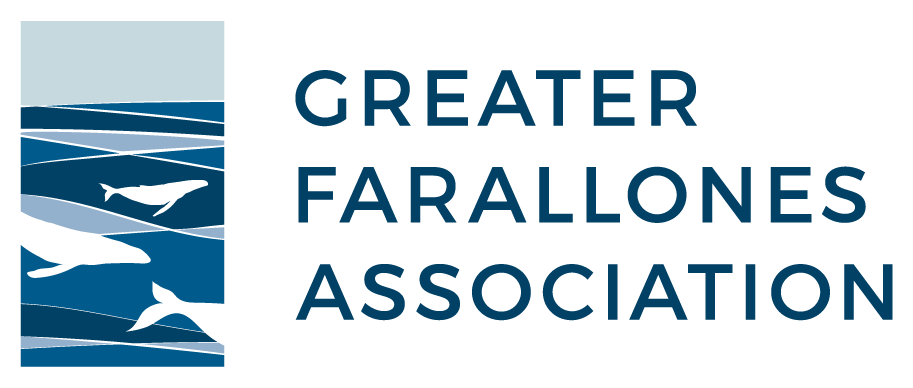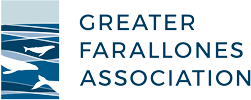Kelp Restoration Team Heads Back into the Field

As spring brings calmer ocean conditions within Greater Farallones National Marine Sanctuary, our team prepares to head into the field – which, in our case, means heading out to sea! In particular, our kelp restoration team is gearing up for another crucial year of kelp forest monitoring, purple urchin removals, and research into kelp outplanting and kelp forest dynamics.
We continue to monitor select sites along the sanctuary coast for kelp canopy cover utilizing unmanned aerial vehicle (UAV, or drone) technology. This monitoring helps us understand where kelp forests are currently thriving relative to previous years. A new addition to our monitoring efforts this year will include surveys to assess how many purple urchin are found within the intertidal zone of our restoration sites. This information will help us understand the urchin densities across our restoration areas, including the intertidal zone, and help inform decisions about how to best manage urchin populations.
Picking up where we left off in the fall, our team will purchase purple urchins removed from our restoration sites by local commercial sea urchin divers, who have been greatly impacted by the closure of the commercial red urchin fishery. Last year, these efforts were focused on Timber Cove and Fort Ross Cove along the Sonoma Coast. Divers removed roughly 24,000 pounds of urchin from these two sites last year (that’s nearly 170,000 urchins!). Urchins removed from the restoration sites are offloaded and transported by the Dandy Fish Company and taken to West Marin Compost. By removing urchins from these coves, divers are helping to reduce grazing pressure on remaining kelp forests and creating ideal conditions for potential outplanted kelps.
The project team continues to investigate the best methods for kelp outplanting within the sanctuary in partnership with Sonoma State University and Moss Landing Marine Labs. Kelp outplanting, and kelp restoration in general, remains a novel field of practice, and we are contributing to and utilizing the best available science to guide our efforts. At Bodega Marine Lab, we have already begun nurturing another generation of young bull kelp integrating important lessons from last year. This year, we hope to outplant these young kelps earlier in their natural growing season during late spring and early summer when seasonal upwelling is at its peak, bringing nutrients from the deep sea to shallow coastal waters.
Speaking of science, we are thrilled to be diving into exciting research projects to better understand how kelp forests impact coastal ecosystems. Partnering with Greater Farallones and Cordell Bank National Marine Sanctuaries, California Department of Fish and Wildlife, Sonoma State University, Moss Landing Marine Labs, UC Davis’ Bodega Marine Lab, Stanford University, and UC San Diego’s Scripps Institution of Oceanography, we continue to seek scientific insights related to oceanographic conditions in and around the restoration sites, including water temperature, light availability, salinity, oxygen concentrations, pH, and nutrient availability. These variables help to paint a picture of conditions before, during, and after restoration efforts. Through a project supported by the National Fish and Wildlife Foundation, we are also examining how restored kelp forests might influence nearshore waves and currents, which in turn may influence climate change impacts like coastal erosion.
We are excited to get back into the field to continue the hard, but deeply meaningful, work of restoring this magnificent ecosystem alongside our dedicated partners. If you would like to support us in this effort, please consider making a donation today!
The Greater Farallones Kelp Restoration Project is a joint project of Greater Farallones and Cordell Bank National Marine Sanctuaries and Greater Farallones Association. This work is supported by the National Oceanic and Atmospheric Administration (NOAA), NOAA’s Office of Habitat Conservation, National Fish and Wildlife Foundation, California Department of Fish and Wildlife, and Pacific States Marine Fisheries Commission.

